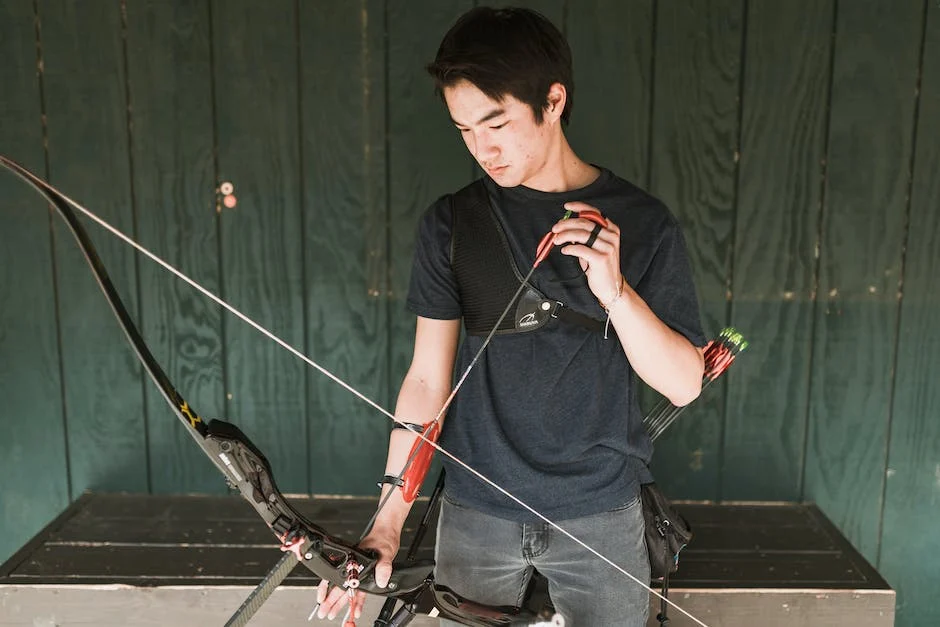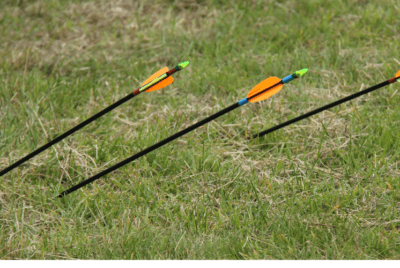Beginner’s Guide to Archery: Getting Started
What is archery?
Archery is a traditional sport that dates back thousands of years and has evolved into a modern competitive activity. It involves using a bow and arrow to shoot at a target, aiming for accuracy and precision. Archery requires concentration, focus, and proper technique to consistently hit the target. It is not only a physical activity but also a mental one, as archers must learn to control their breathing and stay calm under pressure. Archery can be enjoyed as a recreational hobby or pursued at a competitive level, with various styles and disciplines to explore. Whether you are interested in archery for sport, hunting, or simply as a way to connect with nature, this beginner’s guide to archery will provide you with all the information you need to get started.

Benefits of archery as a sport
Archery is not just a sport, but a way of life that offers numerous benefits for beginners and experienced archers alike. One of the key benefits of archery is its ability to improve focus and mental clarity. As you draw back the bowstring and aim at the target, your mind becomes completely absorbed in the present moment, allowing you to block out distractions and develop a strong sense of concentration. Additionally, archery is a great way to improve your physical fitness. Drawing the bow requires upper body strength and stability, which can help build muscle tone and increase overall body strength. Furthermore, archery promotes patience and discipline, as it requires consistent practice and precision. Whether you are looking to improve your focus, enhance your physical fitness, or simply enjoy the thrill of hitting the bullseye, archery has something to offer for everyone.
Types of bows used in archery
When it comes to getting started in archery, it’s important to understand the different types of bows that are commonly used. There are three main types of bows: recurve bows, compound bows, and longbows. Recurve bows are the most traditional and are known for their elegant design and simplicity. Compound bows, on the other hand, are more modern and feature a system of pulleys and cables that provide a mechanical advantage. Lastly, longbows are the oldest type of bow and are known for their long, straight limbs. Each type of bow has its own unique characteristics and advantages, so it’s important to choose the one that best suits your needs and preferences as a beginner archer.
Understanding the different arrows and their components
Understanding the different arrows and their components is essential for any beginner in the world of archery. Each arrow is composed of four main parts: the shaft, the fletching, the nock, and the arrowhead. The shaft is the main body of the arrow and can be made from various materials such as wood, aluminum, or carbon fiber. The fletching, typically made of feathers or plastic vanes, is attached to the back of the shaft and helps stabilize the arrow during flight. The nock is a small groove at the back of the arrow that hooks onto the bowstring. Lastly, the arrowhead is the front tip of the arrow, which can vary in shape and weight depending on the intended use. Understanding these components will not only help beginners choose the right arrows for their needs but also enable them to make necessary adjustments for optimal performance and accuracy.
Essential equipment and gear for beginners
Having the right equipment and gear is essential for beginners in the world of archery. One of the most important pieces of equipment is the bow, which comes in various types such as recurve, compound, and longbow. Each type has its own advantages and disadvantages, so it’s important to choose one that suits your needs and preferences. Alongside the bow, you’ll need arrows that are the correct length and weight for your draw length and strength. Additionally, a good quality arm guard and finger tab are crucial for protecting your arm and fingers from injuries. Lastly, a sturdy and adjustable bow sight will help you aim accurately. By investing in the right equipment and gear, you’ll be setting yourself up for success as you embark on your archery journey.
Proper technique and form for shooting a bow
Proper technique and form are essential for shooting a bow accurately in archery. It is crucial to have a consistent stance, with your feet shoulder-width apart and perpendicular to the target. The grip on the bow should be firm but not too tight, allowing for a smooth release. As you draw the bowstring, your back should be straight, and your shoulder blades should be squeezed together, creating a strong foundation. Keeping your eye on the target, release the string with a controlled and relaxed motion. By mastering these techniques, you will improve your accuracy and become a skilled archer.
Safety precautions and etiquette on the archery range
Safety precautions and etiquette on the archery range are of utmost importance for beginners. Before even picking up a bow, it is essential to familiarize yourself with the range rules and regulations. Always wear protective gear, such as an arm guard and finger tab, to prevent injuries. Respect the range and others around you by following proper shooting etiquette, like waiting for your turn and keeping a safe distance from other archers. Additionally, be aware of your surroundings and never point an arrow towards anyone. By prioritizing safety and practicing good etiquette, you can ensure a safe and enjoyable archery experience for yourself and those around you.
Finding a local archery club or instructor for beginners
Finding a local archery club or instructor is a vital first step for beginners looking to delve into the world of archery. While it may be tempting to try and teach yourself through online tutorials or books, having a knowledgeable guide can make a world of difference in your learning journey. Not only will a club or instructor provide you with proper technique and safety instruction, but they will also help you choose the right equipment and ensure that you are practicing in a safe and supportive environment. Additionally, being part of a club or having an instructor allows you to connect with fellow archers, share experiences, and receive valuable feedback. So, take the time to research and locate a local archery club or instructor near you – it will greatly enhance your archery experience and set you up for success as you embark on this exciting new adventure.
Tips for improving accuracy and aiming skills
Improving accuracy and aiming skills is a vital aspect of becoming a skilled archer. While it may seem challenging at first, there are several tips and techniques that can help beginners enhance their skills. One effective method is to focus on proper body alignment and posture, as this greatly impacts your aim and stability. Additionally, practicing regularly and incorporating specific aiming exercises into your routine can help train your eye-hand coordination and improve your overall accuracy. By implementing these strategies and remaining dedicated to your practice, you’ll soon see significant improvements in your archery skills.
Conclusion and next steps for beginners in archery
As a beginner in archery, you have taken the first step towards mastering this ancient sport. In conclusion, it is important to remember that consistency and practice are key to improving your skills. Whether you are aiming for recreational shooting or competitive archery, setting goals and tracking your progress will help you stay motivated. Additionally, seeking guidance from experienced archers or joining a local archery club can provide valuable insights and opportunities for growth. As you continue on your archery journey, remember to always prioritize safety and have fun. Happy shooting!
FAQs: Beginner’s Guide to Archery:
-
What are the different types of bows used in archery, and how do they differ?
The guide mentions three main types of bows—recurve, compound, and longbows. Each has unique characteristics and advantages. Beginners should understand the differences to choose the one that suits their needs and preferences. -
What are the main components of an arrow, and why is it important to understand them?
Arrows consist of the shaft, fletching, nock, and arrowhead. Understanding these components is crucial for beginners to choose the right arrows for their needs and make necessary adjustments for optimal performance and accuracy. -
What safety precautions and etiquette should beginners follow on the archery range?
Safety is emphasized in the guide, mentioning the importance of wearing protective gear, respecting range rules, and practicing proper shooting etiquette. Beginners should familiarize themselves with these precautions for a safe and enjoyable archery experience. -
Why is finding a local archery club or instructor recommended for beginners?
While self-teaching is an option, having a knowledgeable guide can significantly impact the learning journey. A local club or instructor not only provides proper technique and safety instructions but also helps beginners choose the right equipment and ensures a safe practice environment. -
What tips are provided for improving accuracy and aiming skills in archery?
The guide offers tips such as focusing on proper body alignment, practicing regularly, and incorporating specific aiming exercises. Beginners can follow these strategies to enhance their skills and see significant improvements in their accuracy over time.




